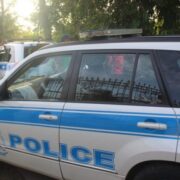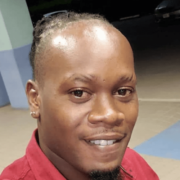Three Grand Cayman Amazon parrots set free at Botanic Park today Loop Cayman Islands
Black Immigrant Daily News
Three Grand Cayman Amazon parrots, Klakker, Chonky and Slim Jim, were set free at the Queen Elizabeth II Botanic Park today (Saturday).
Assisting with the parrots’ release was Jane H?konsson, a zoologist and research officer with the Terrestrial Resources Unit at the Department of Environment (DoE).
Explaining how the parrots ended up at the Queen Elizabeth II Botanic Park, H?konsson explained that the trio were initially rescued last year from the Dart Nursery in West Bay after a Royal Palm tree they were nesting in fell over.
Describing why the Queen Elizabeth II Botanic Park may be an appropriate home for Klakker, Chonky and Slim Jim, H?konsson said that parrots “like more natural areas” and they can usually be found “literally anywhere there are fruit trees. “
Habitat being destroyed
H?konsson cautioned, however, that the available habitat for Grand Cayman parrots is decreasing.
With all the bulldozing of every natural habitat you can imagine, there is just enough breeding spaces for them.
[And] every time we look at satellite images, more and more green spaces disappear. So, they are at a real risk of extinction, especially on the Brac.
H?konsson said.
H?konsson also explained that there are matters beyond our control that impact habitat. One example is a natural disaster, like a hurricane.
With Grace we lost a lot of nesting trees.
[Then] when we had Paloma go through, we lost over 50 per cent of the Brac population.
If we have two consecutive storms, we would likely lose the Grand Cayman parrot.
H?konsson noted, however, that, notwithstanding the challenges there are things that the DoE can do to help with the parrot population.
H?konsson said:
What we can do as natural resource managers is to increase the population’s resilience so that they are more resilient to storms. But obviously, we’re not doing that. We’re decreasing their resilience by continually seeing declining populations due to mostly development, but also [through the] pet trade [where] people keep them for pets and farmers still shoot them because they would eat their mangoes.
Working with farmers
In relation to farmers, H?konsson referred to her existing working relationships with farmers.
H?konsson said:
I work with farmers to deter parrots from their farms through audio cues.
Every time I get a rescue bird, they scream when you are trying to take them to the vet and stuff.
So I’ve recorded those screams and we put it on the speaker system and parrots actually stay out of the farms when they hear other parrots in pain.
So it has really worked this year.
This year, I only tried on one farm, but he lost not a single mango.
H?konsson indicated that the DoE will continue to build good relationships with farmers, with the aim of helping them to protect their crops from parrots, while keeping the parrots safe.
More about Cayman Amazon Parrots
There are two Cayman parrots, one being the Grand Cayman Amazon and the other is the Cayman Brac Amazon. These are understood to be sub-species of the Cuban Amazon.
The Grand Cayman Amazons are endemic to Grand Cayman. According to a census completed by DoE and the United States Fish and Wildlife Service in 2015, it is estimated that there are 6000 parrots.
The Cayman Brac Amazons are endemic to Cayman Brac. The foregoing census indicated that there are about 600 parrots in Cayman Brac, some of which go to Little Cayman from time to time.
NewsAmericasNow.com










Leave a Reply
Want to join the discussion?Feel free to contribute!